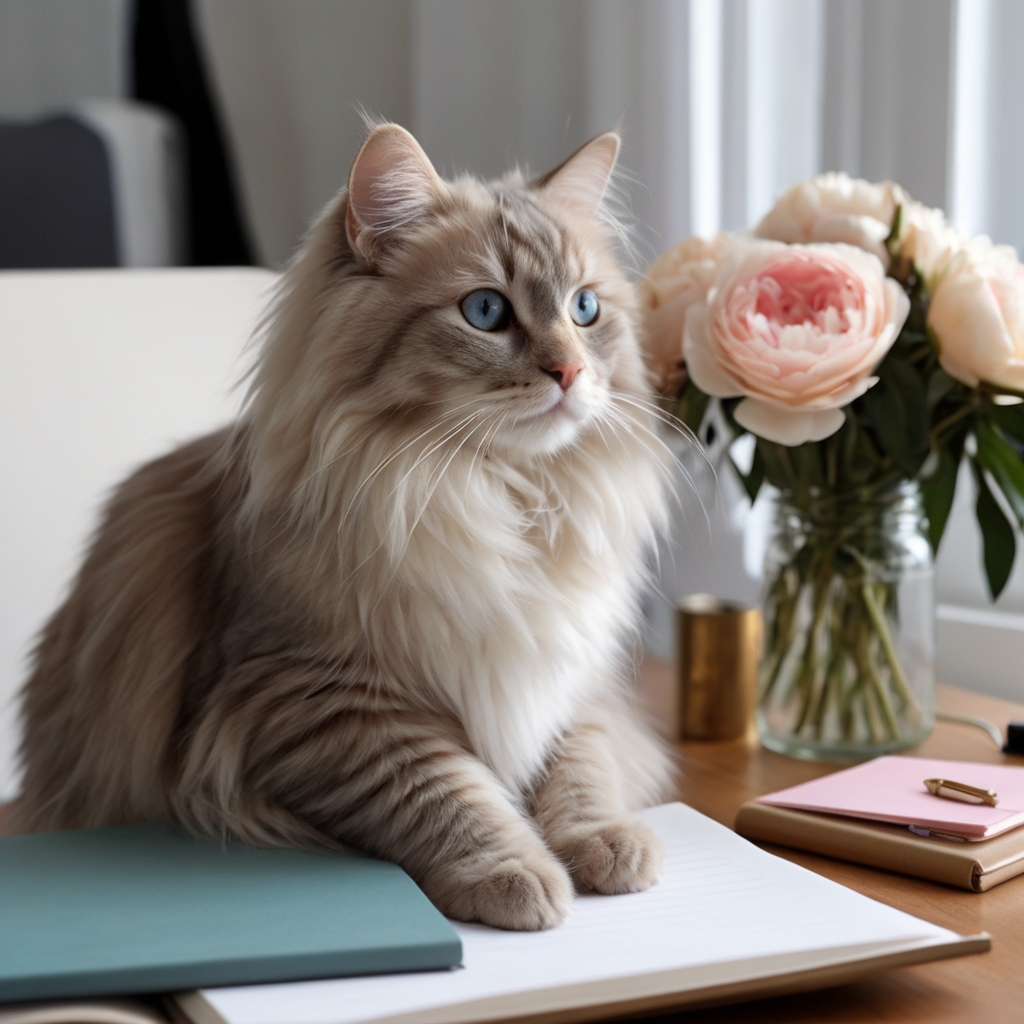How to Prevent Obesity in Cats: A Complete Guide

Cat obesity is an increasingly common issue that can lead to serious health problems. As loving pet owners, it’s essential to keep your feline friend at a healthy weight to ensure a longer, happier life. In this comprehensive guide, we’ll cover the causes of obesity in cats, how to identify if your cat is overweight, and actionable tips on diet and exercise to prevent and manage obesity.
Ideal Cat Weight: What Should Your Cat Weigh?
Maintaining a healthy cat weight is key to preventing obesity and ensuring long-term health. The ideal weight for a cat varies by breed, but generally, most domestic cats should weigh between 8 and 12 pounds. Larger breeds like Maine Coons may weigh more, while smaller breeds may weigh less. A quick way to assess your cat’s weight is to gently feel their ribs. If you can feel the ribs with light pressure, but they aren’t visibly sticking out, your cat is likely at a healthy weight.
Healthy Cat Weight Checklist:
- Rib Check: Can you feel your cat’s ribs easily?
- Waistline: Does your cat have a visible waist when viewed from above?
- Tummy tuck: Is the area behind their ribs tucked in slightly?
Causes of Cat Obesity: Why Do Cats Gain Weight?
Understanding what leads to cat obesity is essential to preventing it. Overweight cats often suffer from the same problems as overweight humans: they consume more calories than they burn. However, there are other contributing factors to obesity:
- Overfeeding: One of the most common causes of obesity in cats is overfeeding, especially when feeding high-calorie dry food. Free-feeding or giving too many treats can easily lead to weight gain.
- Lack of Exercise: Cats, especially indoor cats, may not get enough exercise, which is crucial for maintaining a healthy cat weight.
- Age: Older cats are more prone to weight gain due to reduced activity levels and a slower metabolism.
- Neutering/Spaying: While neutering or spaying does not directly cause obesity, it can reduce a cat’s energy needs, requiring a reduction in calorie intake.
- Medical Conditions: Some conditions, such as hypothyroidism or arthritis, can contribute to weight gain in cats.
Best Diet for Weight Control: What to Feed Your Cat
Proper nutrition plays a huge role in preventing obesity in cats. Providing your cat with the right balance of nutrients and controlling portion sizes can help maintain a healthy cat weight.
Cat Diet Plan for Weight Control:
- High-Protein, Low-Carb Foods: Cats are obligate carnivores, meaning their bodies are designed to metabolize protein rather than carbohydrates. Opt for high-protein, low-carbohydrate cat food to support their nutritional needs.
- Portion Control: Measure your cat’s food based on their ideal body weight, not their current weight. Avoid free-feeding and stick to regular meal times.
- Wet Food vs. Dry Food: Wet food can be a better option for weight control because it tends to have fewer calories than dry food, plus it helps with hydration.
- Limit Treats: Treats should only make up about 10% of your cat’s daily calorie intake.
Best Diet Tips:
- Check the food label for high-quality protein sources.
- Divide daily portions into smaller, frequent meals to promote metabolism.
- Consult your vet about a cat diet plan suited for weight loss if your cat is already overweight.
Exercise Tips for Indoor Cats: Keep Them Active
Getting your cat moving is essential for weight management in cats. Indoor cats, in particular, need structured exercise routines to burn calories since they don’t get the opportunity to roam outside.
Cat Exercise Ideas:
- Interactive Toys: Toys like laser pointers, feather wands, and balls can stimulate your cat’s hunting instincts and keep them moving.
- Climbing Structures: Invest in cat trees or shelves to encourage climbing, which engages muscles and helps with weight management.
- Puzzle Feeders: Make mealtime more interactive by using puzzle feeders that require your cat to work for their food.
- Scheduled Playtime: Set aside 15–20 minutes, twice a day, for active play with your cat. Even short bursts of playtime can make a big difference in preventing cat obesity.
Signs Your Cat Is Overweight: How to Tell
Early detection of obesity is critical for managing your cat’s health. The following are common signs of obesity in cats:
- No Visible Waistline: When viewed from above, your cat’s body should have a noticeable curve. If their sides bulge out, they may be overweight.
- Difficulty Feeling Ribs: If you can’t feel your cat’s ribs without pressing hard, they may be carrying extra weight.
- Reduced Activity: Overweight cats tend to be less active and more prone to sleeping excessively.
- Difficulty Jumping: Cats that struggle to jump or move with agility may be carrying excess weight that affects their mobility.
If you notice any of these signs of obesity in cats, it’s important to take action to get their weight back on track.
Long-Term Health Effects of Obesity in Cats
Obesity in cats isn’t just a cosmetic issue—it can lead to serious health problems. Keeping your cat at a healthy weight is crucial for preventing conditions that could reduce their quality of life.
Common Health Risks of Cat Obesity:
- Diabetes: Obese cats are at a higher risk of developing diabetes, which requires lifelong management.
- Arthritis: Extra weight puts more strain on your cat’s joints, leading to arthritis and mobility issues.
- Heart Disease: Just like in humans, obesity can lead to cardiovascular problems in cats.
- Shortened Lifespan: Studies show that overweight cats tend to live shorter lives than their healthy-weight counterparts.
Conclusion: Keeping Your Cat Healthy and Fit
Preventing obesity in cats requires a balance of proper diet, exercise, and routine health check-ups. By staying on top of their nutrition and keeping them active, you can help your cat maintain a healthy weight and avoid the serious health risks associated with obesity. Regular vet visits are essential for monitoring your cat’s health and adjusting their weight management plan as needed. With the right approach, you’ll ensure your cat stays fit, active, and happy for years to come.
